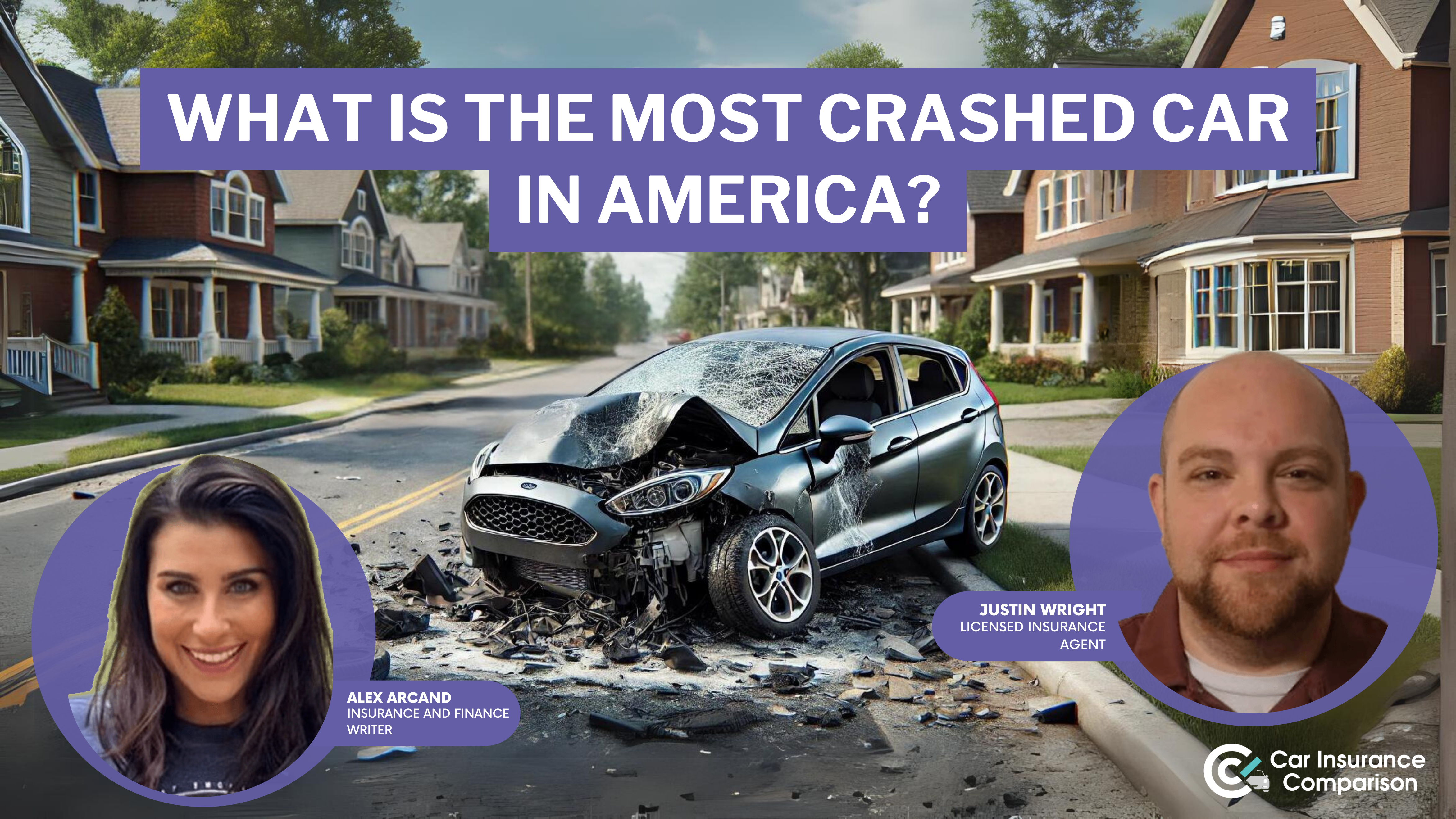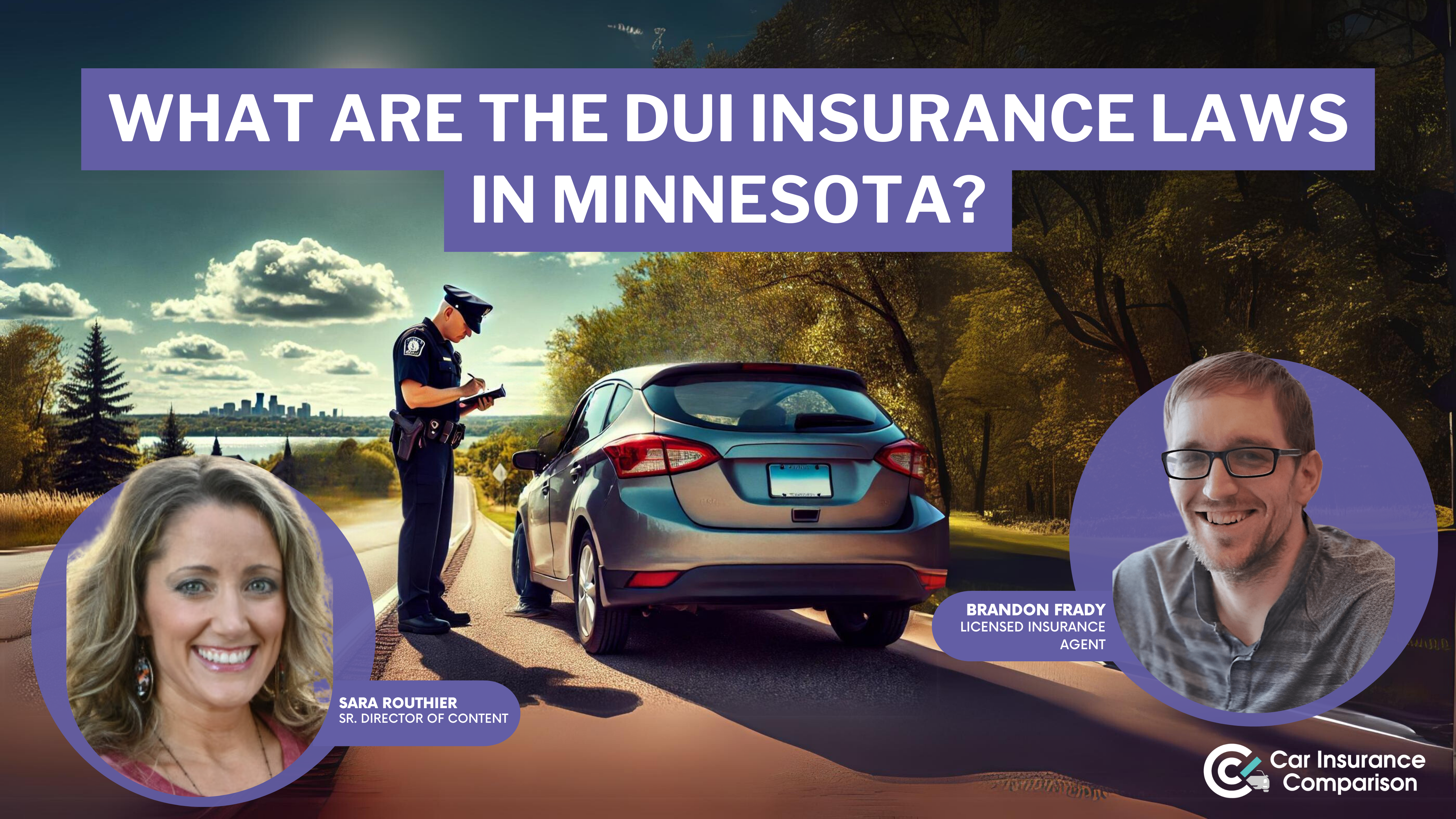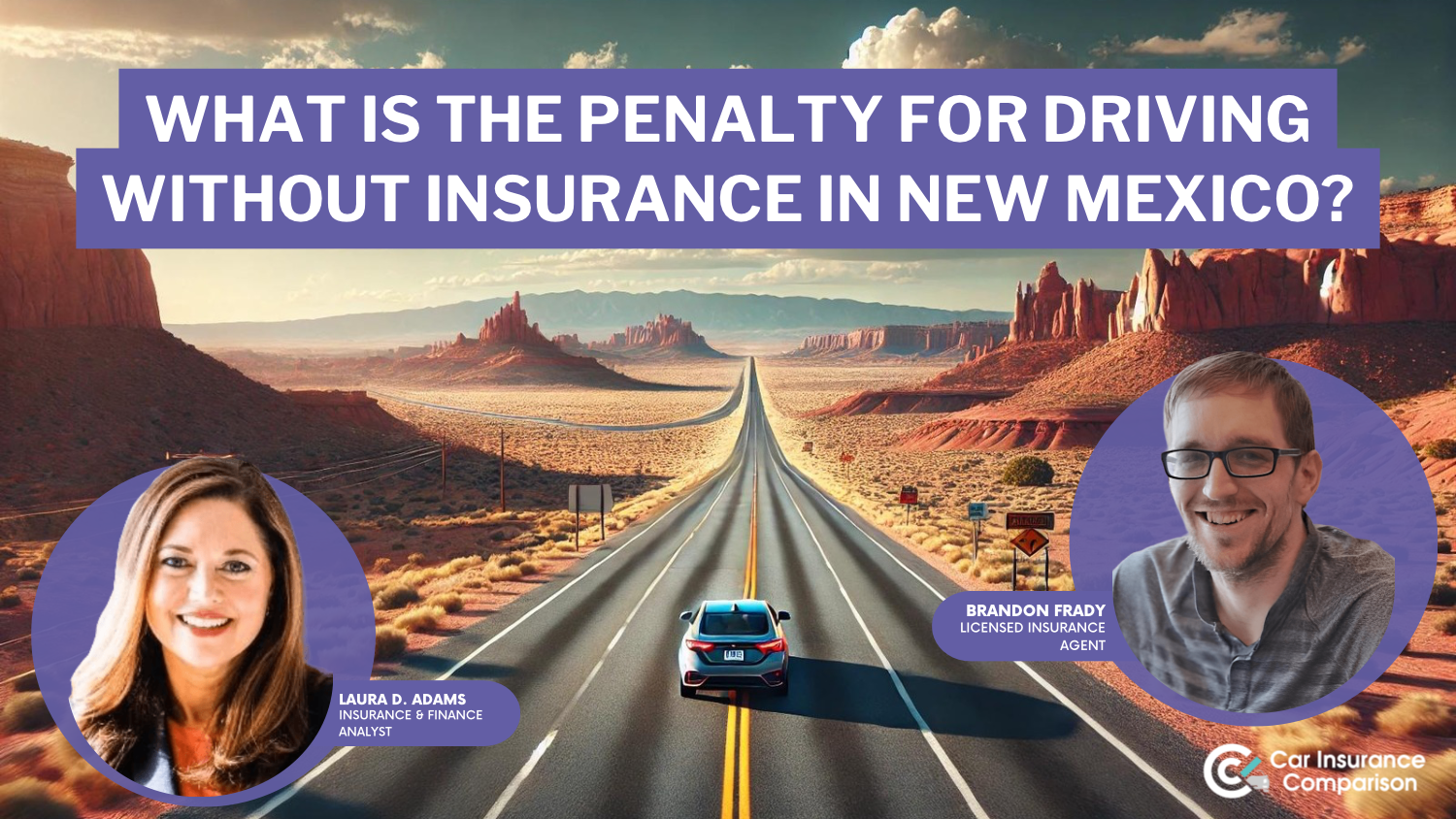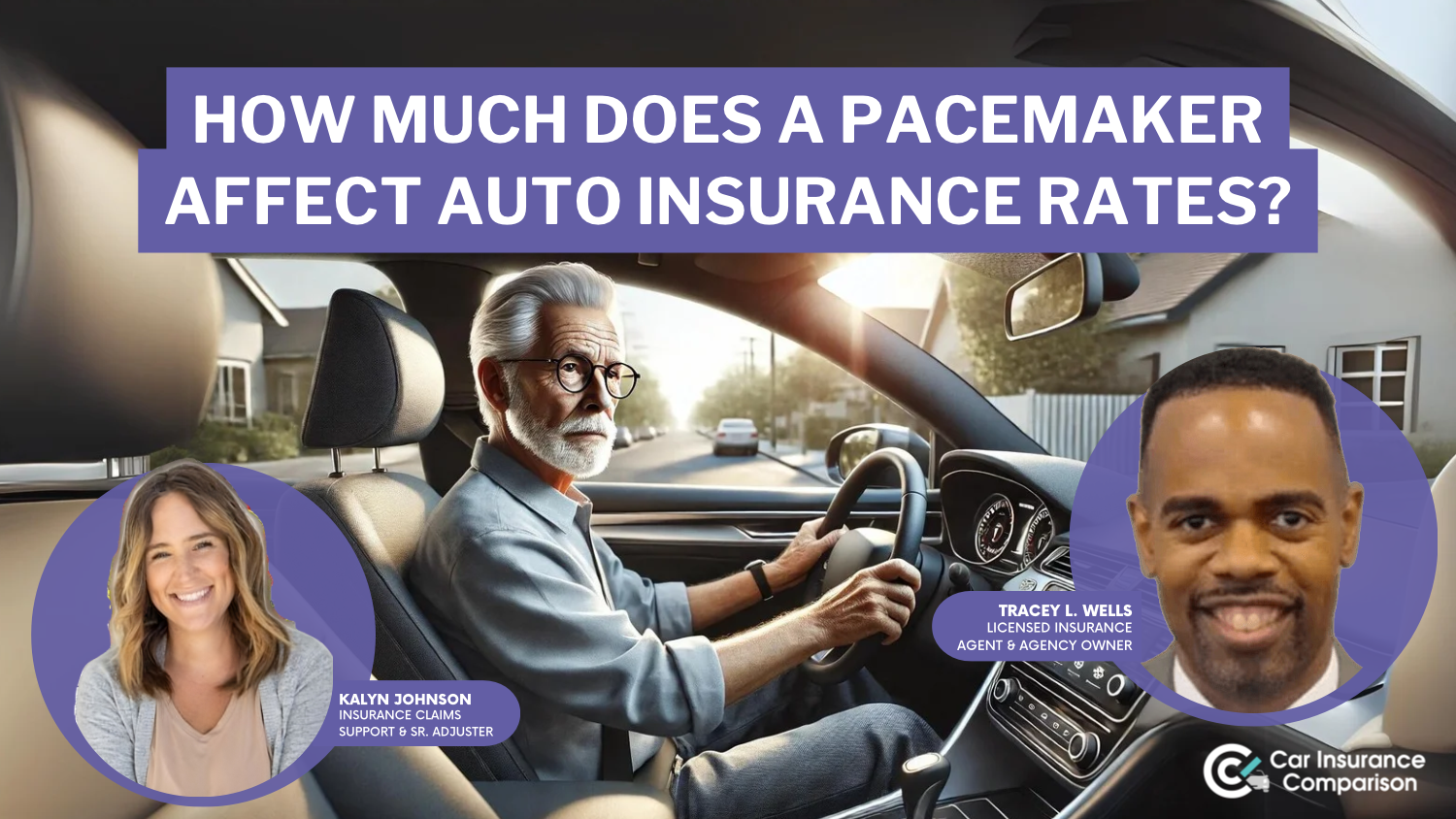Compare No-Fault Car Insurance: Rates, Discounts, & Requirements [2025]
Thinking of adding no-fault car insurance to your policy? Read on to learn more about who needs no-fault coverage, where it’s available, and the benefits it can offer drivers.
Secured with SHA-256 Encryption





Table of Contents
Table of Contents


Licensed Insurance Agent
Michelle Robbins has been a licensed insurance agent for over 13 years. Her career began in the real estate industry, supporting local realtors with Title Insurance. After several years, Michelle shifted to real estate home warranty insurance, where she managed a territory of over 100 miles of real estate professionals. Later, Agent Robbins obtained more licensing and experience serving families a...
Michelle Robbins


Licensed Insurance Agent
Brandon Frady has been a licensed insurance agent and insurance office manager since 2018. He has experience in ventures from retail to finance, working positions from cashier to management, but it wasn’t until Brandon started working in the insurance industry that he truly felt at home in his career. In his day-to-day interactions, he aims to live out his business philosophy in how he treats hi...
Brandon Frady
Updated October 2024
- No-fault car insurance helps cover drivers’ medical expenses, lost income, essential services, and funeral costs resulting from an auto accident, regardless of fault
- No-fault insurance coverage is only available in states that adhere to a “no-fault” insurance system and “no-fault choice” states, where no-fault coverage is available but optional
- Insurance rates for no-fault coverage are typically higher than rates in states where no-fault coverage isn’t required
When it comes to buying auto insurance, drivers today have no shortage of options to choose from — or requirements to adhere to. If you live in a no-fault car insurance state, you will have additional coverage requirements to meet.
Understanding your car insurance coverage options and obligations can be tricky, from widely varying state laws to an array of different auto insurance providers and policy choices. But as traffic-related fatalities reached a 16-year high in 2021, according to data from the National Highway Traffic Safety Administration, it’s critical to understand your car insurance policy to ensure your vehicle and passengers are properly protected in the event of an accident.
This article will explore what no-fault car insurance is, what it covers, who needs it, and what drivers should know before buying a no-fault policy.
What is no-fault coverage?
No-fault car insurance coverage, also referred to as personal injury protection (PIP) insurance coverage, is designed to help cover medical bills, lost wages, funeral expenses, and other specific expenses for drivers or passengers who are injured or killed in an auto accident.
Unlike other types of car insurance coverage, no-fault insurance benefits are usually available to anyone in the covered vehicle, regardless of whether or not the driver was at fault for the accident.
How No-Fault Auto Insurance Differs from Other Types of Insurance
Each type of car insurance coverage offered by insurers serves a different purpose, and no-fault coverage is no exception. No-fault car insurance includes the minimum liability car insurance required in every state, which covers property damage and bodily injury you cause to others in an at-fault accident.
However, no-fault states also require PIP coverage to meet minimum requirements. PIP insurance helps pay for medical and other expenses if you or your passengers are injured in an auto accident, regardless of who was at fault.
Minimum no-fault insurance will not cover any damages to your vehicle, so you will need to carry no-fault full coverage insurance. You’re often required to carry full coverage if you have an auto loan or lease a vehicle. This coverage includes collision insurance to cover accidents and comprehensive insurance to pay for vehicle theft, vandalism, disasters, and more.
Free Insurance Comparison
Compare Quotes From Top Companies and Save
Secured with SHA-256 Encryption
Who needs no-fault car insurance?
Whether or not you need no-fault car insurance depends on the laws in your state. Car insurance requirements in each state differ. Most U.S. states are “tort states.” That is, states where insurance coverage is based on fault and drivers, aren’t required to purchase no-fault car insurance.
However, in a handful of “no-fault” states, the law requires drivers to carry PIP car insurance. Some other states, called “choice no-fault” states, allow drivers to purchase no-fault car insurance but don’t explicitly require it. Because of the differences in state laws regarding car insurance coverage, no-fault coverage isn’t available everywhere.
Below is a list of states requiring or allowing drivers to purchase no-fault insurance coverage.
No-Fault Car Insurance States by Effective Date
No-Fault Car Insurance States Effective Date
Puerto Rico 1970
Massachusetts January 1, 1971
Florida January 1, 1972
New Jersey* January 1, 1973
Michigan October 1, 1973
Kansas January 1, 1974
Utah January 1, 1974
New York February 1, 1974
Hawaii September 1, 1974
Minnesota January 1, 1975
Kentucky* July 1, 1975
North Dakota January 1, 1976
Pennsylvania* July 1, 1990
*Optional
Since requirements can change over time, it’s best to check with your insurance company about the laws in your state before purchasing auto insurance.
Read more: Compare Full Tort Car Insurance: Rates, Discounts, & Requirements
How No-Fault Car Insurance Works
As a vehicle owner, you might ask yourself, “How does no-fault insurance work?” Like all insurance coverage, no-fault insurance covers the costs of specific items after a covered event, as determined in the details of your policy.
Despite those similarities, drivers should be aware of important differences in how no-fault auto insurance works.
What does no-fault insurance cover?
The benefits of no-fault insurance coverage vary depending on the insurer and individual policy limits. It usually covers the following expenses for drivers and passengers in a covered vehicle within the coverage limits of the driver’s policy.
- Medical bills related to injuries sustained during an accident
- Health insurance deductibles associated with medical care after an accident
- Lost wages due to the inability to work after a car accident
- Essential household or substitute services (like childcare or house cleaning) due to the inability to perform these tasks because of accident-related injuries
- Funeral and burial expenses in the event of a death caused by an accident
Unlike insurance coverage in tort states, which is based on who is at fault in an accident, no-fault insurance usually covers everyone in the insured vehicle, no matter who was at fault for the accident.
What isn’t covered by no-fault insurance?
No-fault auto insurance doesn’t cover bills or other expenses that aren’t related to injuries sustained during an auto accident. Expenses not likely covered in most no-fault states include, but aren’t limited to, the following:
- Damage to your vehicle as a result of an accident
- Vehicle theft or vandalism
- Damage to other people’s property caused by an accident
- Medical expenses or other costs that exceed your policy’s coverage limits.
- “Pain and suffering” damages
Drivers can recover pain and suffering damages by filing a civil lawsuit against the at-fault driver in an accident, but no-fault car insurance will not cover it.
However, some states have laws offering exceptions to certain rules listed above. If you live in a no-fault state and were recently injured in an accident, speak with your insurance company and consider hiring a car insurance attorney.
What is a no-fault claim?
A no-fault insurance claim is a request for financial compensation from an insurance company for specific expenses related to injuries sustained in a car accident. Compared to filing an insurance claim in a tort state, filing a no-fault car insurance claim is straightforward.
Rather than submitting a third-party claim to the at-fault driver’s insurance provider after an accident, drivers with no-fault insurance coverage can submit a claim directly to their insurance company.
Despite the convenience of filing a no-fault insurance claim, there can also be drawbacks. For example, drivers with no-fault coverage aren’t guaranteed a settlement, and the compensation they can collect after an accident is sometimes limited.
How to Determine Coverage Limits for No-Fault Car Insurance
Determining the right coverage limits when buying a no-fault insurance policy should always be based on your individual needs and level of comfort with the potential financial consequences of an accident.
For example, if you’re a driver whose health insurance policy provides sufficient long-term post-accident coverage, choosing the lowest legally required PIP limit in your state might make sense to you.
If you don’t have quality health insurance or think your policy’s post-accident care is insufficient in the event of a catastrophic accident, it might be wise to consider choosing higher coverage limits when adding no-fault coverage to your car insurance policy.
How much does no-fault auto insurance cost?
Since car insurance rates are based on several factors, including driving history, age, location, policy details, and coverage limits, rates vary widely from driver to driver and state to state. However, car insurance rates are generally higher in no-fault states due to the higher levels of coverage and additional PIP insurance drivers must buy to meet their state’s legal requirements.
A good example of high car insurance rates in no-fault states is Michigan car insurance, where the average cost of auto insurance exceeds all other states due to its legal requirement for all drivers to carry unlimited PIP coverage.
Although a recent reform lowered insurance rates in the state, eliminating the unlimited PIP requirement proved controversial after accident survivors began losing care due to the reforms.
Free Insurance Comparison
Compare Quotes From Top Companies and Save
Secured with SHA-256 Encryption
Which insurance companies offer no-fault car insurance?
Although many companies offer no-fault insurance, a few of the largest insurance companies that currently offer no-fault coverage in select states include
- Progressive
- Geico
- Allstate
- Liberty Mutual
- Nationwide
- Farmers
- The Hartford
If you live in a state that requires or allows drivers to purchase no-fault insurance, rates will vary between insurers. It’s best to shop around for car insurance quotes to find the best deals on policies before choosing an insurance provider.
The Bottom Line Before You Buy No-Fault Car Insurance
No-fault car insurance — also referred to as personal injury protection (PIP) insurance — is designed to cover medical expenses, lost wages, and sometimes even essential services when you’re involved in a car accident, regardless of who was at fault. Your monthly insurance rates will be higher in a no-fault state, although the exact rates you’ll pay will vary based on your driving history, location, and other factors.
Before contacting an insurance provider about purchasing no-fault insurance coverage, make sure you understand whether or not you need it and whether it’s available to you. Because the majority of states are “tort” states and use fault to determine insurance payments after an accident, no-fault car insurance coverage isn’t available everywhere.
To determine whether your state is a “no-fault” or “no-fault choice” state, where no-fault insurance is optionally available, contact an insurance provider.
Finally, if you live in a “no-fault” or “no-fault choice” state, remember that choosing the right no-fault coverage limits for your individual needs is important. Because catastrophic accidents can have serious long-term financial repercussions for drivers — sometimes involving payments for lifelong medical care — it’s important to select coverage limits that you’re comfortable with.
Research accident rates in your state from the National Highway Traffic Safety Administration when deciding on coverage limits, and use our free comparison tool below to find the cheapest no-fault car insurance quotes based on the level of coverage you want.
Frequently Asked Questions
What is no-fault car insurance?
No-fault car insurance is a type of auto insurance coverage that allows policyholders to receive compensation for certain damages and injuries from their own insurance company, regardless of who is at fault for the accident.
How does no-fault car insurance differ from traditional car insurance?
In traditional car insurance, the at-fault driver’s insurance company pays for the damages and injuries of the other party. With no-fault insurance, each party involved in an accident is responsible for their own medical expenses and property damage, regardless of fault.
What are the benefits of having no-fault car insurance?
- Faster claim resolution: Since you don’t have to determine fault, the claims process is often quicker.
- Immediate coverage: You can receive compensation for your injuries and damages promptly, without waiting for fault determination.
- Protection against lawsuits: No-fault insurance helps reduce the likelihood of being sued by the other party involved in an accident.
Are there any drawbacks to no-fault car insurance?
- Limited compensation: No-fault insurance typically covers only medical expenses, lost wages, and certain other expenses. It may not cover property damage in some cases.
- Higher premiums: No-fault insurance can be more expensive compared to traditional insurance due to the increased coverage it provides.
- Limited ability to sue: In some no-fault states, policyholders have limited rights to sue for additional damages, which may limit their options for seeking compensation.
Which states have no-fault car insurance laws?
As of my knowledge cutoff in September 2021, the following states had no-fault car insurance laws: Florida, Hawaii, Kansas, Kentucky, Massachusetts, Michigan, Minnesota, New Jersey, New York, North Dakota, Pennsylvania, and Utah. However, it’s important to note that insurance laws can change, and it’s best to consult with your insurance provider or local authorities for the most up-to-date information.
Are there any discounts available for no-fault car insurance?
Discounts for no-fault car insurance may vary depending on the insurance company and the state you reside in. However, common discounts may include safe driving discounts, multi-policy discounts, and discounts for installing safety devices in your vehicle.
Get a FREE Quote in Minutes
Insurance rates change constantly — we help you stay ahead by making it easy to compare top options and save.







